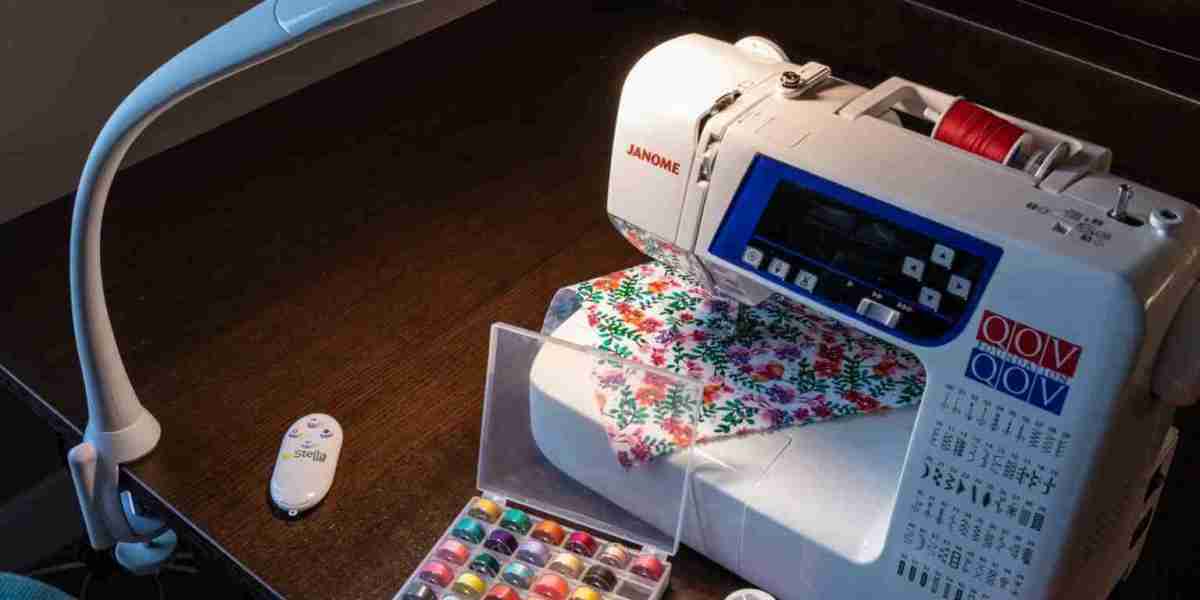In the world of sewing, precision is paramount. Every stitch, every seam, every detail requires meticulous attention. However, achieving such precision demands more than just skill; it requires the right tools, including proper lighting. Enter the sewing light—a humble yet indispensable ally to the seamstress or tailor. In this comprehensive guide, we delve into the nuances of sewing lights, exploring their types, benefits, and how to choose the perfect one for your needs.
Understanding Sewing Lights
The Essence of Illumination
At its core, a sewing light is a source of illumination specifically designed to enhance visibility during sewing tasks. Whether hand-stitching delicate fabrics or operating a sewing machine at high speed, adequate lighting is essential for accuracy and comfort. Sewing lights come in various forms, each catering to different preferences and requirements.
Types of Sewing Lights
Task Lamps: Task lamps are versatile lighting fixtures commonly used in sewing spaces. They offer adjustable brightness and positioning, allowing users to direct light precisely where needed. With features like dimming options and color temperature control, task lamps ensure optimal lighting conditions for any sewing project.
Machine Lights: Sewing machines often come equipped with built-in lights to illuminate the work area. These lights are typically positioned above or beside the needle, providing direct illumination to the stitching area. LED lights are popular in modern sewing machines for their energy efficiency and durability.
Magnifying Lights: For intricate sewing tasks that demand exceptional precision, magnifying lights are invaluable. These lights combine illumination with magnification, offering a clear and magnified view of the stitching area. They are particularly useful for detailed embroidery, quilting, or working with small, intricate patterns.
Clip-On Lights: Clip-on lights are portable lighting solutions that can be attached to various surfaces, such as sewing tables or embroidery hoops. Their compact design makes them ideal for travel or for illuminating specific areas of larger projects. With adjustable clips and flexible goosenecks, clip-on lights offer versatility and convenience.
Benefits of Using a Sewing Light
Enhanced Visibility
The primary benefit of using a sewing light is improved visibility. By illuminating the stitching area with bright, focused light, sewing lights reduce eye strain and fatigue, allowing for more comfortable and accurate work. Whether sewing in dimly lit spaces or during evening hours, a sewing light ensures consistent visibility of the fabric and stitching details.
Increased Productivity
With proper illumination, sewing enthusiasts can work more efficiently and productively. Clear visibility enables faster and more precise stitching, reducing the time spent on each project. Additionally, well-lit workspaces promote better concentration and attention to detail, resulting in higher-quality finished products.
Eye Protection
Sewing lights also play a crucial role in safeguarding eye health. By providing adequate lighting, they minimize the risk of eye strain, headaches, and other discomforts associated with prolonged sewing sessions. Moreover, some sewing lights offer features like adjustable brightness and color temperature, allowing users to customize the lighting to suit their visual preferences.
Choosing the Right Sewing Light
Factors to Consider
When selecting a sewing light, several factors should be taken into account to ensure optimal performance and satisfaction:
Brightness: Look for a sewing light with sufficient brightness to illuminate your workspace effectively. LED lights are preferred for their bright, energy-efficient illumination.
Adjustability: Choose a sewing light that offers adjustable settings, such as brightness levels and color temperature, to tailor the lighting to your preferences and project requirements.
Size and Portability: Consider the size and portability of the sewing light, especially if you need to move it between different sewing stations or travel with it.
Mounting Options: Depending on your workspace setup, evaluate the mounting options available for the sewing light, such as clamp-on, freestanding, or built-in designs.
Magnification: If you frequently work on intricate projects or fine details, consider a sewing light with built-in magnification capabilities to enhance visibility and precision.
Energy Efficiency: Opt for energy-efficient sewing lights, such as LED models, to minimize electricity consumption and reduce long-term operating costs.
Popular Brands and Models
Several reputable brands specialize in sewing lights, offering a wide range of options to suit various preferences and budgets. Some popular brands include OttLite, Daylight Company, and Mighty Bright. Specific models, such as the OttLite LED Desk Lamp and the Daylight Company Slimline Table Lamp, are well-regarded for their brightness, adjustability, and durability.
Conclusion
In the art of sewing, precision is paramount, and adequate lighting is indispensable. A quality sewing light not only enhances visibility and productivity but also contributes to eye comfort and overall sewing experience. Whether you're a seasoned seamstress, a budding fashion designer, or a hobbyist crafter, investing in the right sewing light can elevate your craft to new heights, illuminating your path to sewing success. Visit the official website of stellalighting.com








